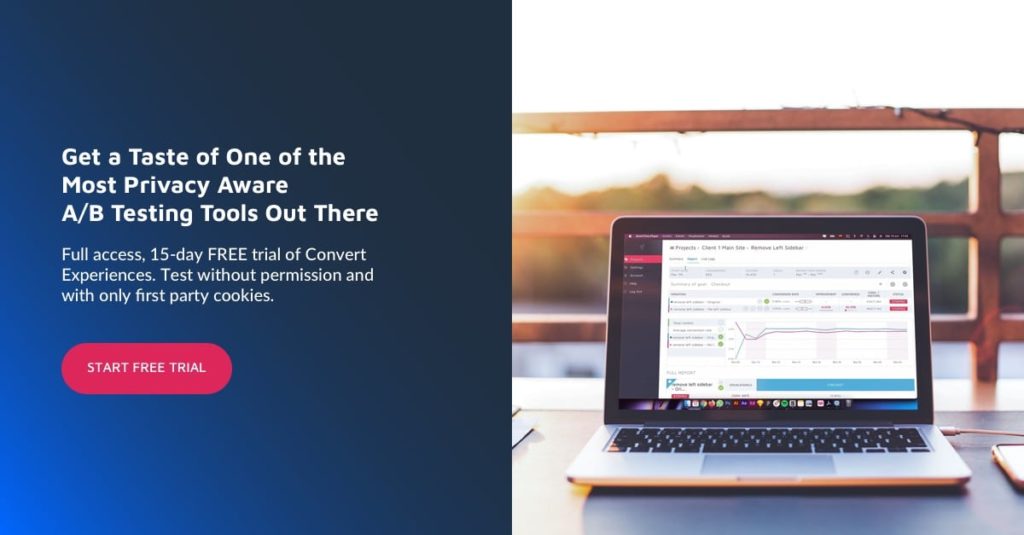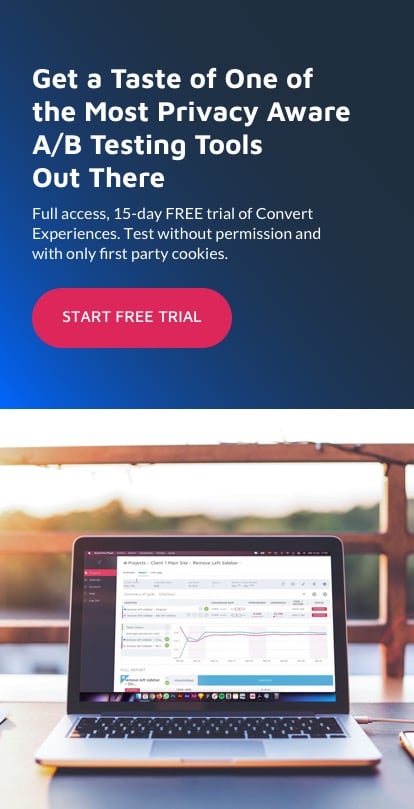What is Behavioral Targeting? A Guide for CROs
The market bombards your prospects with content and ads. So it should come as no surprise if they are unreceptive and blind to your efforts.
So, how do you capture their attention?
Behavioral targeting allows you to break through the noise.
This article will cover:
- Definition of behavioral targeting
- The benefits of behavioral targeting
- Steps to nailing behavioral targeting for better engagement and conversions
- The dark side of behavioral targeting
Let’s dig right in…
What is Behavioral Targeting?
What is Behavioral Targeting?
Behavioral targeting is a marketing strategy that collects user data based on users’ behavior. This information is then used to provide better website experiences and strengthens your marketing and advertising campaigns.
Behavioral targeting mines metrics like:
- Frequently visited pages
- Webpage Viewing times
- Clicks
- Web searches
- Transactions
- Purchase behaviors
- Length of session
With behavioral targeting, you can customize your creatives and messaging to match prospects’ intent.
If done correctly, your visitors could think you are psychic.
According to an Accenture report, “See People, Not Pattern”, psychic abilities are a good superpower to have. They report that:
“87% of consumers say it’s important to buy from a brand or retailer that “understands the real me.” Behavioral targeting works for both businesses and consumers.”
For CROs, there are several benefits to launching behavioral targeting campaigns.
However, it can be slippery. Performed incorrectly, you quickly become the creepy website your parents warned you to stay away from. #strangerdanger
5 Important Benefits of Using Behavioral Targeting
Behavioral targeting can benefit you and your customer. Below outlines some advantages.
Benefit #1: Increased Engagement
Engagement is a critical step in the conversion process. Without engagement, there is zero chance of conversion.
One reason for poor engagement is delivering content that is drab. However, using insights from visitor behaviors can help you craft more engaging copy, content, and ads.
Also, behavioral targeting lays a solid foundation for retargeting and reengagement campaigns.
Benefit #2: Higher CTR of Ads and Content
If you know how an audience engaged with content in the past, you can replicate these patterns for higher CTR.
Benefit #3: Higher Conversion Rates
Companies that use behavioral targeting report having higher conversions rates. Which makes sense. More engagement and higher click-through-rates positions businesses for increased conversion.
Benefit #4: Better User Experience
Most people are protective of their personal information. However, a New Adlucent study found that users and prospects enjoy the personalization of messaging.
“…consumers crave a personalized advertising experience and that 71% of respondents prefer ads tailored to interests and shopping habits.”
For example, you have an ecommerce site that sells shoes. A woman comes to your site after browsing for 45 mins for wedding shoes. Don’t you think she will be happy if you make it easy for her to find them?. Why make her search, put them right in her face.
Benefit #5: Boost Average Order Value
Insights into your customer’s behaviors mean you have information to aid your efforts throughout the buyer’s journey.
This means you can serve them better products and services that answer their needs, ultimately increasing their average order value.
So, with these benefits, how does behavioral targeting work?
How Behavior Targeting Works
There are three primary steps to implementing behavioral targeting. They are:
- Gathering Data
- Segmenting
- Applying the data.
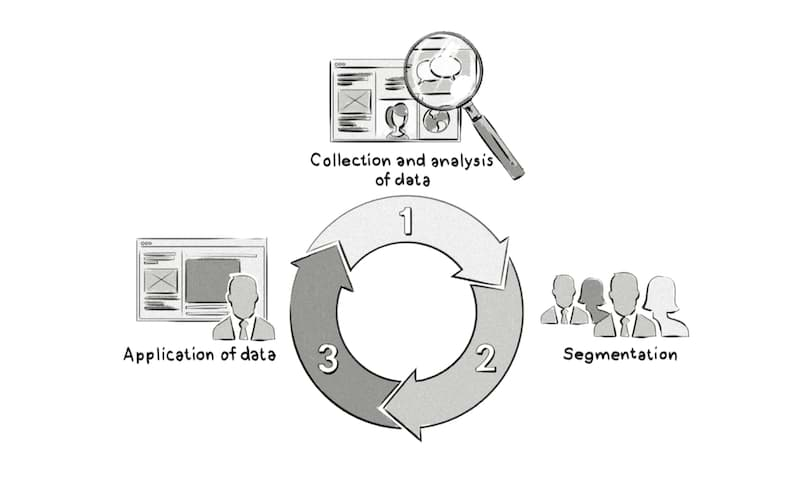
Source
Step 1: Gather Data
Technology is used to gather data, usually from multiple sources. This may include the use of tracking pixels or third-party cookies.
Leveraging the data from your existing experimentation program is another way to glean insight from data.
Step 2: Segmentation
With segmentation, software places users in groups based on behaviors like interest and purchase habits.
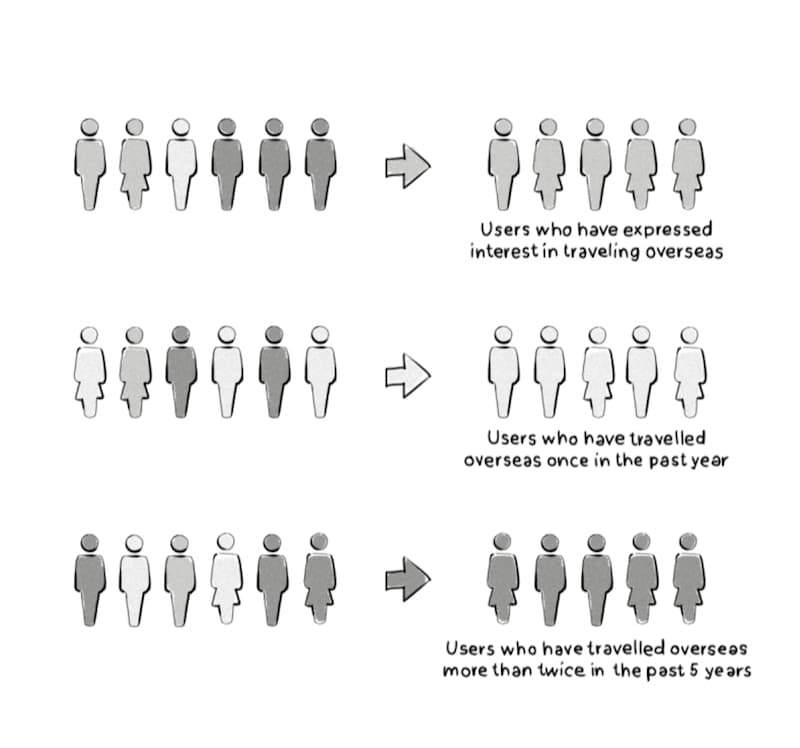
Source
With robust experimentation software like Convert Experiences, you can design your test to segment and define audiences. You can create segments based on several elements, including:
- Language
- Location
- Pages visited
- Date since Last visited
- Goals
- Visit duration
- New Visitor vs. Returning Visitors
Step 3: Apply Data
Now the fun part. You get to transform the information gathered into eye-catching creatives, engaging content, and high converting targeted ads campaigns.
It is critical in this phase to measure your efforts using qualitative and quantitative analytics tools. These tools include A/B testing software like Convert, heatmaps, and visitor behavioral analysis tools.
6 Keys To Nailing Behavioral Targeting
So how can you leverage behavioral targeting? Here are four keys you can use:
How can you leverage behavioral targeting?
Key #1: Use Customized Advertising
Key #2: Use Retargeting
Key #3: Make Better Paid Ads
Key #4: Target Your Ideal Customer
Key #5: Cross-Selling and Upselling
Key #6: Be Transparent
Key #1: Use Customized Advertising
You have the data, customizing you advertising creatives and messaging is how you put it to good use.
Key #2: Use Retargeting
Retarget visitors using behavioral targeting. Retargeting is one of the most effective ways to advertise to potential customers.
By definition, retargeting is a technique where people see your relevant ads or copy based on previous engagement with your brand.
These visitors have already engaged with your content – they are interested. Warm traffic is easier to convert than cold traffic.
Key #3: Make Better Paid Ads
Use data gathered to create ads that your audience want for better conversions.
Key #4: Target Your Ideal Customer
Ivan Kreimer, freelance content marketer, says it best:
“Try to target everyone, and you will sell to no one.”
Understand how behavioral targeting in A/B tests can help improve test design and gather cleaner, less noisy results. Explore Convert’s way
Key #5: Cross-Selling and Upselling
Cross-selling and upselling increase the dollars spent by each customer and decrease your cost per acquisition.
Key #6: Be Transparent
As prospects and customers understand more about marketing tactics and privacy issues, they desire deeper transparency.
Look at these stats:
“73% of consumers will share more personal information if brands are transparent about how it is used. This is up from 66% in 2018.”
Sprout Social surveyed 1,000 US consumers about their feelings on transparency. Nine out of 10 believe transparency is extremely important.
Now that you understand the keys of behavioral targeting, let’s look at its relationship with personalization.
Behavioral Targeting and Personalization
Imagine you were in a crowd, and two people in the crowd try to get your attention.
Your name is Nyaima and you like the color red. Which one do you think would get your attention faster?

This is the power of personalization.
With personalization you can treat your website visitors as unique individuals.
Behavioral targeting gives you the data you need to create personalized experiences for your customers.
Website personalization is now standard practice. And tools like Convert make it effortless to create personalization.
Here’s a step-by-step guide to set up personalization in Convert Experiences.
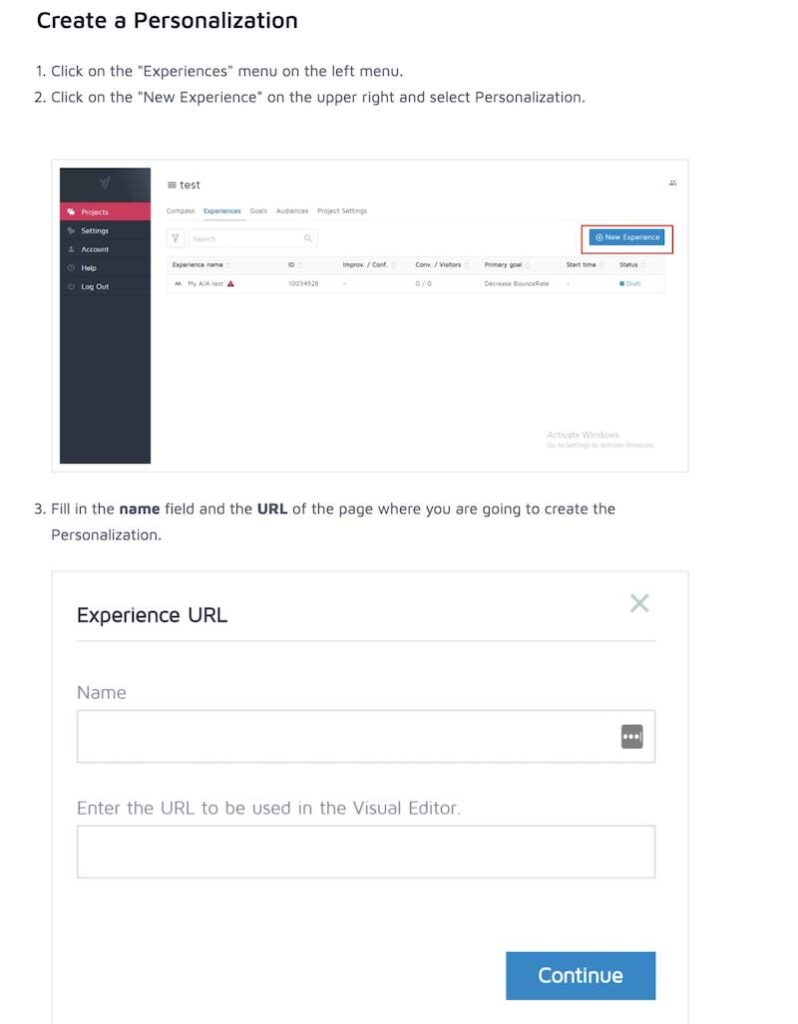
See All Steps
But Is it Stalking? Behavioral Targeting and Privacy
Several categories of visitor information are “tracked” including:
- Computer browsers
- Location
- Subscription information
- Demographics
Is behavioral targeting an invasion of customer privacy? What information is actually gathered? People want to know.
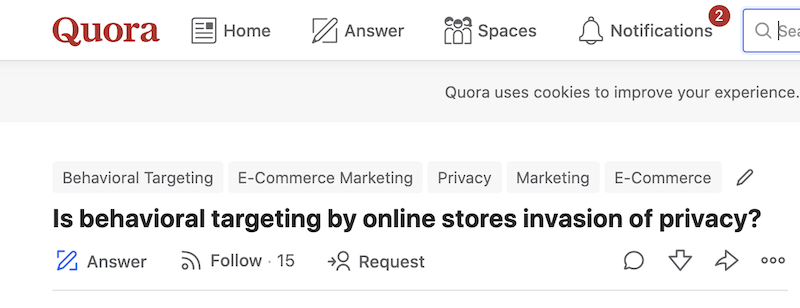
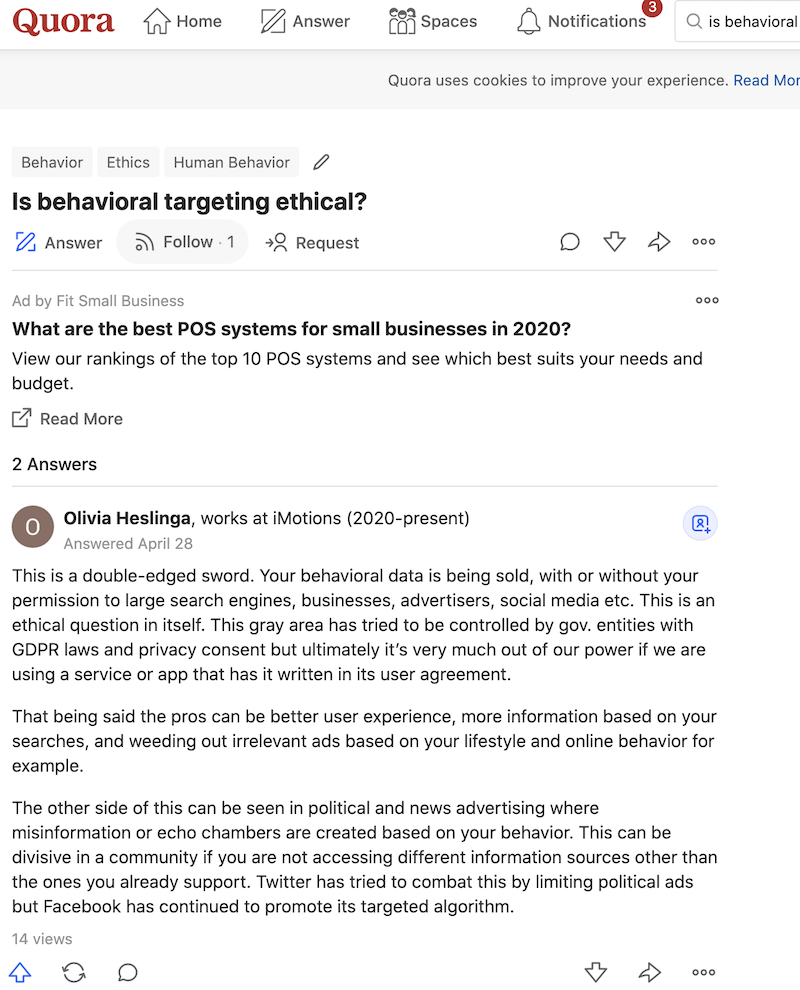
Remember Key #6 – Be transparent.
As a conscious business that believes in privacy and adhering to GDPR, Convert takes questions of privacy seriously.
If you are using behavioral marketing, be sure to comply with GDPR.
Concerned about compliance? Shift your efforts from behavioral targeting to contextual targeting. Contextual targeting complies with GDPR, as it doesn’t rely on personal data.
Contextual targeting is an advertising strategy where you place ads on relevant sites.
An example would be an ad for gourmet spices on a recipe website.
You can also use tools, like Convert Experiences, that’s set to “privacy by default.” Convert doesn’t allow brands to build user profiles using personal data.
The software aggregates data to protect identities. If the segment becomes so small that someone can identify visitors, it sends an alert.
If you care about data protection and privacy compliance, you’ll appreciate how easy it is for you to be transparent. You can share a link or shortcut key with visitors sharing information about experiences being run.
Now that you know how to respect your customers’ privacy, let’s look at a few examples of personalization and behavioral targeting.
Examples of Great Behavioral Targeting and Personalization
Whether you use behavioral targeting, you’ve probably experienced it.
Have you ever watched a video on YouTube? Watched a movie on Netflix? Made a purchase on Amazon? Booked a vacation on Booking.com?
If you answered yes to any of these questions, you have experienced behavioral targeting in action. These giants use behavioral targeting and personalization to amp up your engagement and respective conversions.
Here are a few examples…
YouTube gives you suggestions based on your previous viewing history:
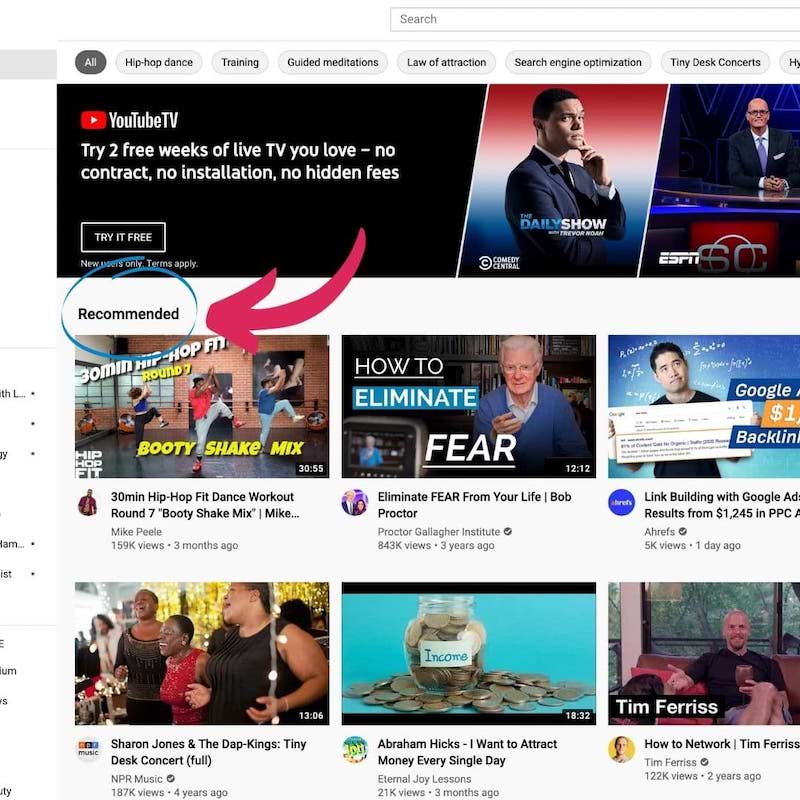
Netflix has a similar recommendation engine:
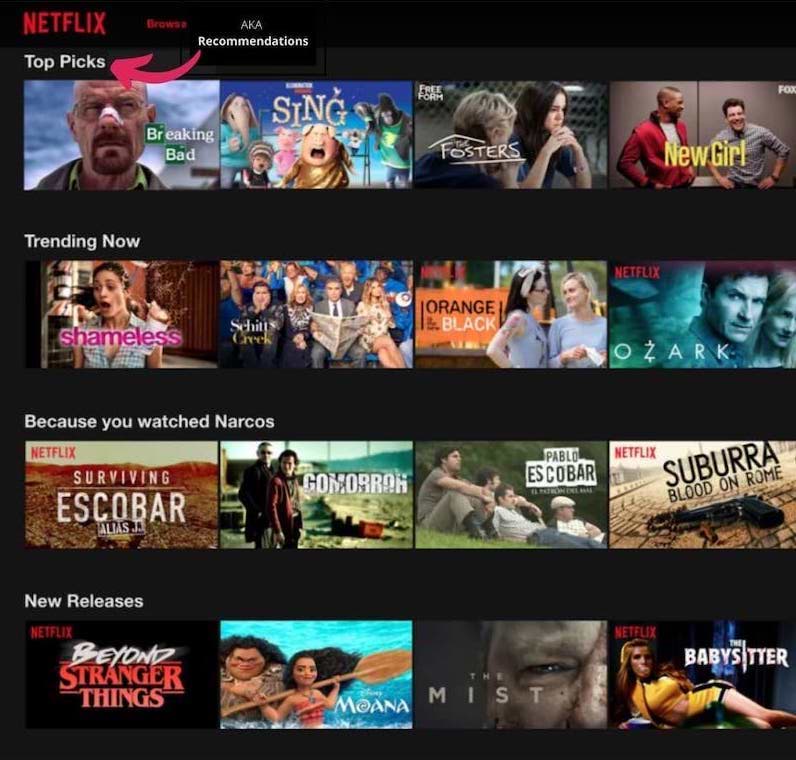
Amazon leads the crowd by using behavioral data gathered from their platform in email and abandoned cart campaigns.
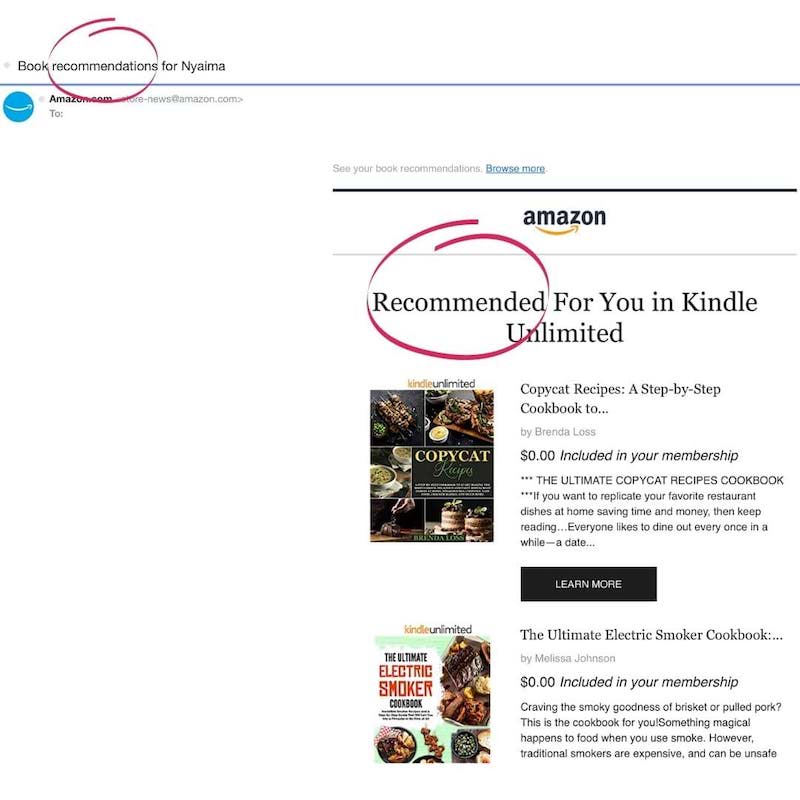
Check out personalization of a landing page:
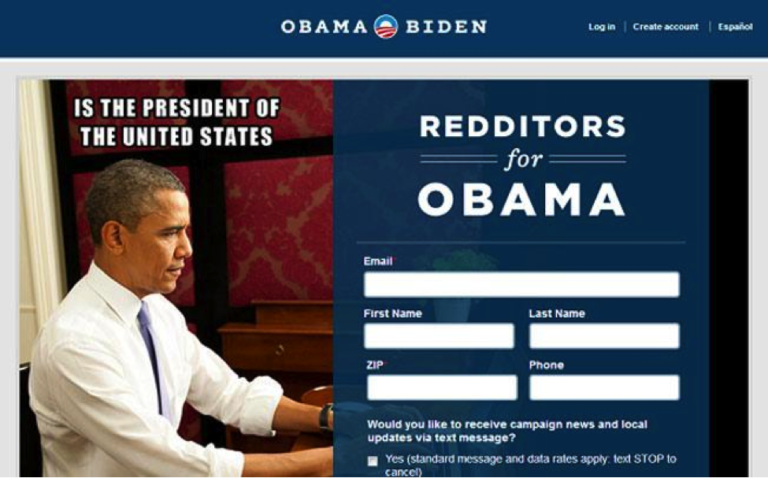
By now your creative juices are flowing. From the examples above, you can see there are many ways you can use behavioral targeting to influence personalization.
Here are a few suggestions:
- Advertising Campaigns
- Website
- Landing Pages
- Mobile Apps
- Email Campaigns
Wrapping it Up…
Are you excited about the power of behavioral targeting? It can transform static messaging into dynamic conversion rich experiences for your visitors.
Beware of privacy issues and GDPR compliance.
And don’t forget you must run test. That is the only way to gauge the effectiveness of your efforts.
Do you use behavioral targeting and personalization in your marketing and optimization campaigns in unique ways?
Written By
Nyaima Smith-Taylor

Edited By
Carmen Apostu

